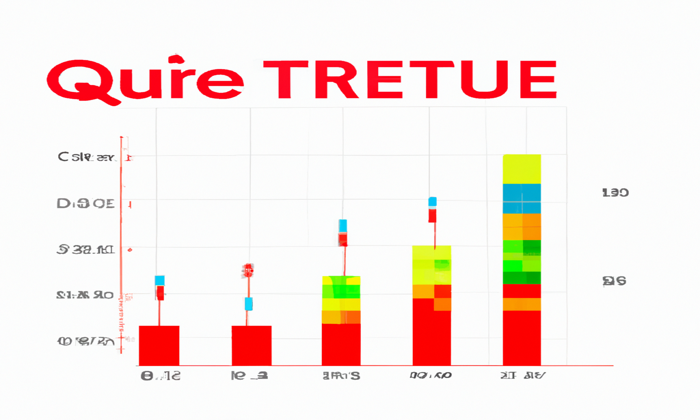The recent Bitcoin bull cycle has caught many analysts off guard, including CryptoQuant CEO Ki Young Ju, who initially believed the rally was over. As Bitcoin recently soared past the $100,000 mark, it highlighted the dynamic and unpredictable nature of the cryptocurrency market. Ju’s change of heart underscores the importance of up-to-date Bitcoin price prediction and market analysis, particularly in the face of evolving market forces such as Bitcoin ETFs. This resurgence has sparked renewed interest among investors, suggesting a shift in market sentiment that incorporates institutional buying alongside traditional trading patterns. With Bitcoin’s price behaving erratically yet bullishly, enthusiasts and analysts alike are eagerly watching for further developments in this volatile arena, ready to adjust their strategies accordingly.
The ongoing surge in Bitcoin values reveals a significant upward trend in cryptocurrency investments, often referred to as a bullish momentum. Analysts and investors are beginning to rethink their strategies in response to recent market fluctuations, emphasizing the necessity of accurate and timely Bitcoin market analysis. As the industry evolves, terms like ‘Bitcoin bull run’ and ‘crypto market dynamics’ have surfaced to describe this period of growth. With the increasing role of institutional investors and options like Bitcoin ETFs, stakeholders must monitor liquidity trends to better predict future price developments. This transformative phase in the digital currency landscape proves that continued adaptation is essential in navigating the opportunities and risks ahead.
The Shift in Bitcoin Market Dynamics
Recent comments from CryptoQuant CEO Ki Young Ju mark a significant reevaluation of the current Bitcoin market dynamics. After mistakenly declaring the end of the Bitcoin bull cycle, Ju now recognizes that Bitcoin has transcended traditional trading models, largely influenced by a diverse range of new market participants. No longer solely dominated by retail investors and whales, the injection of institutional capital and Bitcoin ETFs has fundamentally transformed how the market operates. This diversification introduces a variety of liquidity sources, which can mitigate market volatility driven by profit-taking cycles.
Moreover, as Ju highlighted, the reliance on profit-taking cycles to gauge market sentiment may no longer be adequate. The overwhelming amount of liquidity provided by institutional investors and the influx of Bitcoin ETFs creates a complex landscape for market analysis. This evolution necessitates a fresh approach to Bitcoin price prediction and market analysis, where metrics must encompass not just trading volume but also the participation of these new liquidity providers.
Analyzing Bitcoin’s Resilience Above $100,000
The recent surge of Bitcoin past the $100,000 threshold is noteworthy, especially considering it has sparked discussions around the potential for a new bull cycle. While Ju initially cautioned against expecting enduring bullish momentum, the price action signals arising from this level indicate resilience. This climb back over $100,000 comes at a time of significant news, such as the U.S.-U.K. trade deal, which often plays a role in market psychology and investor behavior. The significance of this price point cannot be overstated, as it serves as a psychological barrier that influences both investor sentiment and market narratives.
Ju’s analysis suggests that the current market conditions should be approached with cautious optimism. Although the price has seen an impressive rally, the reduced daily trading volume indicates uncertainty in sustained upward momentum. Additionally, with many investors still recalling the previous bearish trends, it is essential to incorporate thorough Bitcoin market analysis to grasp the potential of this newly established price level. Stakeholders must monitor how the new liquidity from institutions interacts with atypical sell-offs by traditional whale entities.
The Evolving Role of Institutional Investors and ETFs
Institutional investors and Bitcoin ETFs are rapidly shaping the landscape of the cryptocurrency market. As noted by Ki Young Ju, the market has shifted from a focus on profit-taking by established whales toward a more complex interplay of various liquidity sources. This transformation is critical, as institutional interest stabilizes market fluctuations, while ETFs provide new channels for mainstream adoption. The growing participation of entities like MicroStrategy underscores this trend, as corporate investments into Bitcoin signal a broader acceptance of cryptocurrencies within traditional finance.
Furthermore, the presence of Bitcoin ETFs empowers everyday retail investors by simplifying access to Bitcoin investments. This not only drives volume but also influences overall market sentiment, creating a more robust foundation for future growth. As the market matures, actions taken by these institutional players could have pronounced effects on Bitcoin price prediction methodologies. Analysts will need to examine ETF inflows alongside traditional market indicators to comprehend their potential impact on the overall Bitcoin trajectory.
Bitcoin Price Predictions Amid Transitional Markets
Predicting Bitcoin’s price trajectory in a transitional market can be challenging, particularly as Ju highlights the evolving indicators influencing market sentiment. While some analysts cling to historical data, Ju advocates for incorporating real-time on-chain metrics as part of Bitcoin price predictions. This is especially relevant as whalebased profit-taking strategies appear to be diminishing in influence with the advent of institutional liquidity sources. Analysts should focus on how these changes can lead to either bullish or bearish trends in the coming months.
The transitional phase of the Bitcoin market calls for a careful assessment of Bitcoin market analysis tools. Even as the recent bullish trends indicate optimistic investor behavior, Ju cautions against complacency, noting the need to scrutinize liquidity absorption rates. This focus will be crucial for understanding whether the Bitcoin price can maintain its newfound heights or if a return to bearish sentiment is on the horizon. Continuous monitoring of market indicators alongside macroeconomic developments will be vital for accurate predictions.
Ki Young Ju’s Apology and Future Market Outlook
In a candid acknowledgment, Ki Young Ju’s recent apology for his inaccurate prediction regarding the Bitcoin bull cycle adds a layer of transparency to market analysis. As a prominent figure in the crypto community, Ju’s reflections should prompt investors to consider the complexities inherent in bullish and bearish volatility. His reappraisal signifies the necessity for adaptive strategies in the field of Bitcoin price predictions, especially as new trends emerge within the market dynamics.
Looking towards the future, Ju emphasizes the importance of refining analytical techniques to provide deeper insights. By moving beyond traditional metrics that rely solely on profit-taking cycles, analysts can develop more nuanced Bitcoin market analysis strategies. The influence of institutional investors and the introduction of ETFs will be critical themes, shaping how the market evolves and how investors can respond to changes. This shift in perspective is vital for stakeholders hoping to navigate an ever-changing crypto landscape.
Trends Influencing Bitcoin Market Sentiment
Current trends in Bitcoin market sentiment show a shift towards an optimistic outlook, particularly following price surges like the recent crossing of the $100,000 mark. The environmental factors and political news, such as international trade agreements, play a significant role in shaping investor confidence. These events can drive more liquidity into the market as both institutional and retail investors react to shifting narratives, resulting in a more vibrant trading environment.
Additionally, it is necessary to keep abreast of on-chain metrics that provide insights into market behavior. Events such as increased transaction volumes, new wallet creations, and whale movements can indicate whether the sentiment remains bullish or if a trend reversal is imminent. Accurately reading these signals enables analysts to make informed decisions about potential price predictions and strategic affiliations in the cryptocurrency sphere.
Understanding the Profit-Taking Cycle in Bitcoin Trading
The traditional view of the profit-taking cycle in Bitcoin trading has been a staple for market analysis, as it involves tracking whale sell-offs and their impact on price movements. The reliance on this model, however, may need to be reassessed in light of emerging market behaviors. As Ki Young Ju suggests, the increasing diversity of liquidity sources, including institutional investment and ETFs, challenges the efficacy of solely employing profit-taking metrics as indicators of market sentiment.
Moreover, as the conventional cycles could lead to predictive inaccuracies, they must be integrated with newer analytical approaches that factor in broader market dynamics. By doing so, investors can gain a comprehensive view of the interplay between profit-taking and institutional trends, leading to more accurate Bitcoin price predictions for future market conditions.
Implications of On-Chain Data Analysis for Bitcoin
On-chain data analysis has emerged as a pivotal tool for understanding Bitcoin market trends and price predictions. By examining metrics such as transaction volumes, wallet activities, and miner movements, analysts can glean insights that traditional methods might overlook. Ju’s commitment to employing on-chain analysis reflects a growing sentiment in the crypto community to embrace a data-driven approach to market forecasting, emphasizing its importance in determining the potential for future price movements.
As on-chain analysis evolves, its implications for Bitcoin market strategies become increasingly significant. Investors and traders who lean on this data can make more informed decisions based on empirical evidence rather than speculation. This shift aligns well with the current market atmosphere, where the influx of institutional capital may be guided by comprehensive analytical insights, ultimately impacting the broader sentiment regarding America’s leading cryptocurrency.
The Future of Bitcoin: Potential Bull Cycles Ahead
Looking ahead, the potential for new Bitcoin bull cycles remains a hot topic amongst investors and analysts. As the dynamic nature of the market continues to unfold, understanding the interplay between historical price movements and contemporary factors will be crucial. Ju’s recent observations suggest that rather than adhering strictly to past cycles, market participants should adopt flexible strategies that accommodate new trends arising from institutional behavior and liquidity shifts.
The optimism surrounding Bitcoin’s recent price action brings forth questions about its long-term potential. As the crypto space becomes increasingly institutionalized, the propensity for bull cycles might be influenced more by macroeconomic factors and investor behaviors than traditional market indicators. Continuous observation and adaptation to these changes will be essential for stakeholders aiming to leverage future cycles in their investment strategies.
Frequently Asked Questions
What did CryptoQuant’s Ki Young Ju say about the Bitcoin bull cycle?
Ki Young Ju, the CEO of CryptoQuant, recently admitted he was wrong about the Bitcoin bull cycle being over, especially after BTC surpassed the $100k mark on May 8, 2025. He acknowledged a shift in market dynamics, emphasizing the influence of institutional players and ETFs in diversifying the Bitcoin market.
How has the Bitcoin ETF influenced the current Bitcoin bull cycle?
The introduction of Bitcoin ETFs has significantly influenced the current Bitcoin bull cycle by bringing in new liquidity from institutional investors. This diversification reduces the historical reliance on whale trading patterns, which previously dominated price movements during bull markets.
What are the implications of recent Bitcoin price predictions related to the bull cycle?
Recent Bitcoin price predictions suggest a transitional phase in the bull cycle. While Ki Young Ju initially expected sideways or bearish actions in the coming months, the recent price rally to over $100,000 indicates that market dynamics are evolving, compelling analysts to reassess traditional profit-taking cycle metrics.
Why did Ki Young Ju apologize regarding his Bitcoin bull cycle prediction?
Ki Young Ju apologized for his earlier prediction that the Bitcoin bull cycle was over, acknowledging that his forecast was incorrect after Bitcoin’s surge past the $100k mark. He emphasized the need for more accurate analyses as the market changes.
How does Bitcoin market analysis differ now compared to previous cycles?
Contemporary Bitcoin market analysis differs from previous cycles due to the increased role of institutional investors and Bitcoin ETFs. This new landscape has shifted focus from traditional whale sell-offs to how much new liquidity is entering the market, thus influencing the trajectories of bull and bear cycles.
What role does on-chain data play in assessing the Bitcoin bull cycle?
On-chain data remains crucial in assessing the Bitcoin bull cycle, as it provides insights into market sentiment and liquidity. Analysts like Ki Young Ju continue to value on-chain metrics, even amidst changing market dynamics, to gauge the impact on price trends.
In what ways are profit-taking cycles changing in the Bitcoin market?
Profit-taking cycles in the Bitcoin market are evolving as the influence of traditional whales diminishes. With the influx of institutional liquidity from Bitcoin ETFs, these cycles may now be less indicative of market sentiment compared to previous patterns, highlighting a need for new analysis approaches.
What does the resurgence of Bitcoin above $100,000 mean for the current bull cycle?
The resurgence of Bitcoin above $100,000 suggests that the current bull cycle is stronger than anticipated. It reflects a significant influx of capital into the market, which could reshape strategies for investors and analysts alike, reinforcing the idea that Bitcoin’s trajectory may not strictly adhere to past patterns.
| Key Point | Details |
|---|---|
| Ki Young Ju’s Apology | CryptoQuant CEO admitted his previous prediction that the Bitcoin bull cycle was over was wrong. |
| Current BTC Price | Bitcoin recently surpassed $100,000, marking a significant price recovery. |
| Market Transition | Ju believes the Bitcoin market is in a transitional phase characterized by a shift from traditional models reliant on whales to a more diverse market influenced by ETFs and institutional investment. |
| Impact of Institutions | The influx of new liquidity from institutional investors and ETFs could mitigate traditional sell-off triggers from whale activity. |
| Profit-Taking Cycles Reevaluation | Ju advises to discard relying solely on profit-taking cycles and instead focus on new liquidity influx and market indicators. |
| Future Market Predictions | Despite the bullish price action, Ju notes the market is neither clearly bullish nor bearish and is slow in absorbing new liquidity. |
Summary
The Bitcoin bull cycle is characterized by significant price surges, with recent predictions from CryptoQuant CEO Ki Young Ju highlighting the importance of evolving market dynamics. As Bitcoin surpasses the $100k mark, the influence of institutional investors and ETFs signifies a shift in market behavior, making it crucial to reassess old models of profit-taking and sell-offs. This transitional phase indicates that while bullish signals are present, the overall market sentiment remains cautious, requiring continued analysis of on-chain data to forecast future trends.
As Bitcoin continues to captivate global attention, the Bitcoin bull cycle has sparked renewed excitement in the cryptocurrency market. This surge was accentuated when Bitcoin (BTC) surpassed the impressive milestone of $100,000, prompting many analysts to reassess their Bitcoin price predictions. According to Ki Young Ju, CEO of CryptoQuant, the current climate of the Bitcoin market signifies a transition, revealing the influence of various factors beyond traditional trading dynamics. With the introduction of Bitcoin ETFs and increased institutional participation, the landscape is rapidly evolving, leading to intensified Bitcoin market analysis. As we explore the possibilities of this bull cycle, insights from industry leaders like Ju become invaluable for navigating the complexities of the crypto ecosystem.
Recent developments in cryptocurrency have witnessed a notable resurgence, with various terms like the Bitcoin rally and market upsurge taking center stage. The discourse surrounding Bitcoin’s flourishing prospects underscores a significant shift in investment strategies and market participation, particularly with the influx of institutional entities. Many are keen to analyze Bitcoin’s price trajectory and market dynamics, especially in light of recent events affecting its valuation. With influential voices like Ki Young Ju of CryptoQuant sharing their perspectives, enthusiasts and investors alike are eager to decipher what these changes mean for future market behavior. Understanding this transformative phase is crucial as the cryptocurrency environment adapts to the growing influence of ETFs and institutional involvement.














